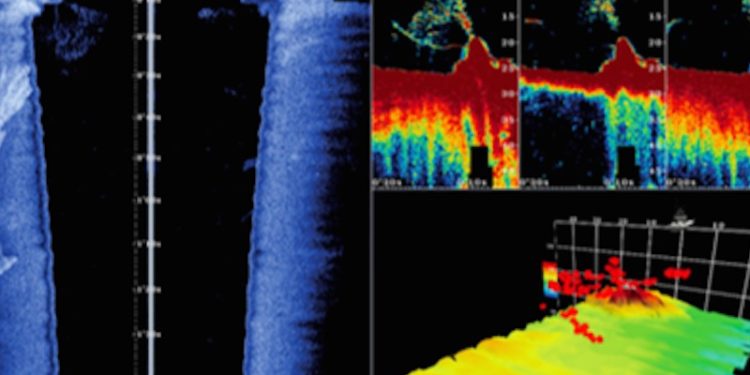Furuno claims that its new DFF3D multibeam sonar, which brings side-scanning capabilities to its NavNet TZtouch and TZtouch2 MFDs, reaches new depth and directions.
According to Furuno USA, the multi-beam sonar takes the highly-desired capability to scan port to starboard under the vessel and adds Furuno’s commercial fisheries spin on it. This deep-water Sonar delivers a sidebar detection range of an unprecedented 220 metres, while being able to see down to over 300 metres.
The DFF3D utilises a new, compact multi-beam transducer, along with Furuno’s own advanced signal processing. The transducer and fairing block is only 14 inches long, which makes this a perfect fit for boats of all sizes. The transducer features a built-in motion sensor, which keeps the images stable, even in rough seas. Additional transducer styles, including a transom mount, are forthcoming. The DFF3D features four display modes to choose from and allows the display to be customised with the modes the user prefers to rely on, including Cross Section, 3D Sounder History, Triple/Single Beam Sounder and Side Scan.
The Cross Section mode displays a real-time sea column echo in 120° port and starboard. This mode helps determine the distribution of bait, fish and the condition of the actual water column. The 3D Sounder History mode provides an intuitive and easy to understand 3D image of the seafloor, along with icons that depict the fish distribution. This mode is very useful for determining fishing hot spots and assessing the seabed condition. Users can mark spots in the sounder history and it will create a waypoint on a chart. The Triple/Single Beam Sounder mode allows the user to display traditional sounder images on the screen, or to display left, centre and right images simultaneously. This shows not only the depth of the fish target, but also the direction the fish are moving. All three of the beam angles and beam widths are selectable. Finally, the Side Scan mode shows the shape of structure in a high definition image, both port and starboard. This mode is ideal for searching the seabed for any structures where fish may be hiding.









